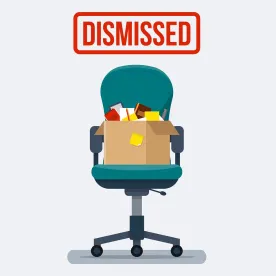The New York State Department of Labor (“NYS DOL”) issued updated regulations under the New York State Worker Adjustment and Retraining Notification (WARN) Act (“the Act”), which requires covered employers to provide 90 days’ advance notice in the event of plant closings, mass layoffs, relocations, or reductions in work hours. The updated regulations, which took effect on June 21, 2023, incorporate 2021 amendments to the Act and include additional clarifications, as well as requirements, for employers who trigger WARN notice obligations under the Act.
Refresher on New York State WARN
As a reminder, New York State’s WARN Act is broader than its federal counterpart and requires a “business enterprise” with 50 or more full-time employees (or 50 or more employees – including part-time employees – that work at least 2,000 hours per week in the aggregate) to provide at least 90 days’ advance notice to employees and certain government officials and entities prior to a mass layoff, plant closing, relocation, or reduction in work hours.
-
“Mass layoff” is defined as a reduction in force that (i) is not the result of a plant closing and (ii) results in an employment loss lasting more than six months at the site of employment during any 30-day period for either 25 or more full-time employees that represent 33% of the full-time workforce at the site or 250 or more full-time employees.
-
A “plant closing” is the permanent or temporary shutdown of a single site of employment, or one or more facilities or operating units within a single site of employment, if the shutdown results in an employment loss during any 30-day period at the site for 25 or more full-time employees.
-
A “relocation” may trigger WARN if it involves the removal of all, or substantially all, of the industrial or commercial operations of an employer to a different location 50 or more miles away from the original site where 25 or more full-time employees suffer an employment loss.
-
Finally, a “reduction in hours of work” will be covered by WARN if there is a 50% or greater reduction in hours during each month of any consecutive six-month period for either 25 or more full-time employees that represent 33% of the full-time workforce at the site or 250 or more full-time employees.
The Updated Regulations
Key updates from the new regulations include the following:
-
Treatment of Remote Employees: For purposes of determining employer coverage under the Act, the amended regulations make clear that full-time employees “who work remotely but are based at the employment site” must be counted towards the 50-employee threshold.
-
“Temporary” Layoffs vs. “Permanent” Layoffs: The amended regulations clearly differentiate between temporary layoffs (which do not trigger an employer’s notice obligations and are now defined as a mass layoff “with a duration of less than a consecutive six-month period and a planned return of employees after the layoff period ends”) and permanent layoffs (which do trigger notice and are now defined as a mass layoff “that extends beyond a consecutive six-month period”).
-
Transfers as Part of the Sale of a Business: The amendments clarify that if employees are transferred as a “good faith condition of [a] purchase agreement” – but the purchaser does not uphold the condition – the purchasing employer is required to provide notice to affected employees and the selling employer is relieved of such obligation.
-
Additional Notice Recipients: In addition to each affected employee (and applicable union representatives), the New York Commissioner of Labor (“Commissioner”) and the local Workforce Investment Board, the amended regulations now require employers to also send notices to the following: (i) chief elected official of the unit or units of local government where the site of employment is located; (ii) school district or districts where the site of employment is located; (iii) locality that provide(s) police, firefighting, emergency medical or ambulance services, or other emergency services, to the locale where the site of employment is located (where two or more localities provide the above services, each locality providing such services must be notified); and (iv) any other individual or entity identified in the Act.
-
Transmission of Notice: Rather than mailing or faxing WARN notices to the Commissioner, notice must now be provided electronically in a manner to be prescribed by the Commissioner and posted on the NYS DOL’s website, or through an alternative method approved by the Commissioner. In May 2023, the NYS DOL launched its new online WARN portal where employers are “strongly encouraged” to submit their notices.
-
Contents of Notice: Among other new requirements, employers are now required to include the following additional information in its notice to the Commissioner: (i) the employer’s complete legal business name and any business names used in the business’s operation; (ii) the home address, personal telephone number(s) and email address(es) (if known), job title, and work locations of each affected employee; (iii) whether each affected employee is paid on an hourly, salary, or commission basis, their part-time or full-time status, and whether they have any affiliation with an employee union representative; and (iv) the total number of full-time and part-time employees in New York State and at each affected site, as well as the number of affected employees at each affected site. In addition, although the pre-amendment regulations required employers to notify the employee representatives and other government entities of the affected employment site’s address, employers must now provide this information to affected employees too.
-
Exceptions to Providing Notice: Under the amended regulations, employers must now submit a request to the Commissioner for a determination that the employer meets the requirements of a claimed exception to the notice requirements “within ten business days of the required notice being provided to the Commissioner” and provide supporting documentation “demonstrating the applicability of an exception.” As a reminder, the exceptions to WARN notice include the faltering company exception, unforeseen business circumstances exception, natural disaster exception and the strike/lockout exception. For each exception, the regulations contain a list of documents that must be provided, along with an affidavit verifying the contents of such documentation. In addition, the list of qualifying unforeseeable business circumstances was extended to include “a public health emergency, including but not limited to a pandemic, that results in a sudden and unexpected closure” and “a terrorist attack directly affecting operations.” And, with respect to the faltering company exception, the amended regulations now clarify that this exception applies only to plant closings.
Next Steps
Employers anticipating a mass layoff, plant closing, relocation or reduction in hours should keep these new WARN requirements in mind, and also note that that while NYS has amended its regulations, employer are required to also comply with federal WARN and any other applicable state laws that require notice of termination. As always, we will continue to monitor for further developments.





 />i
/>i

